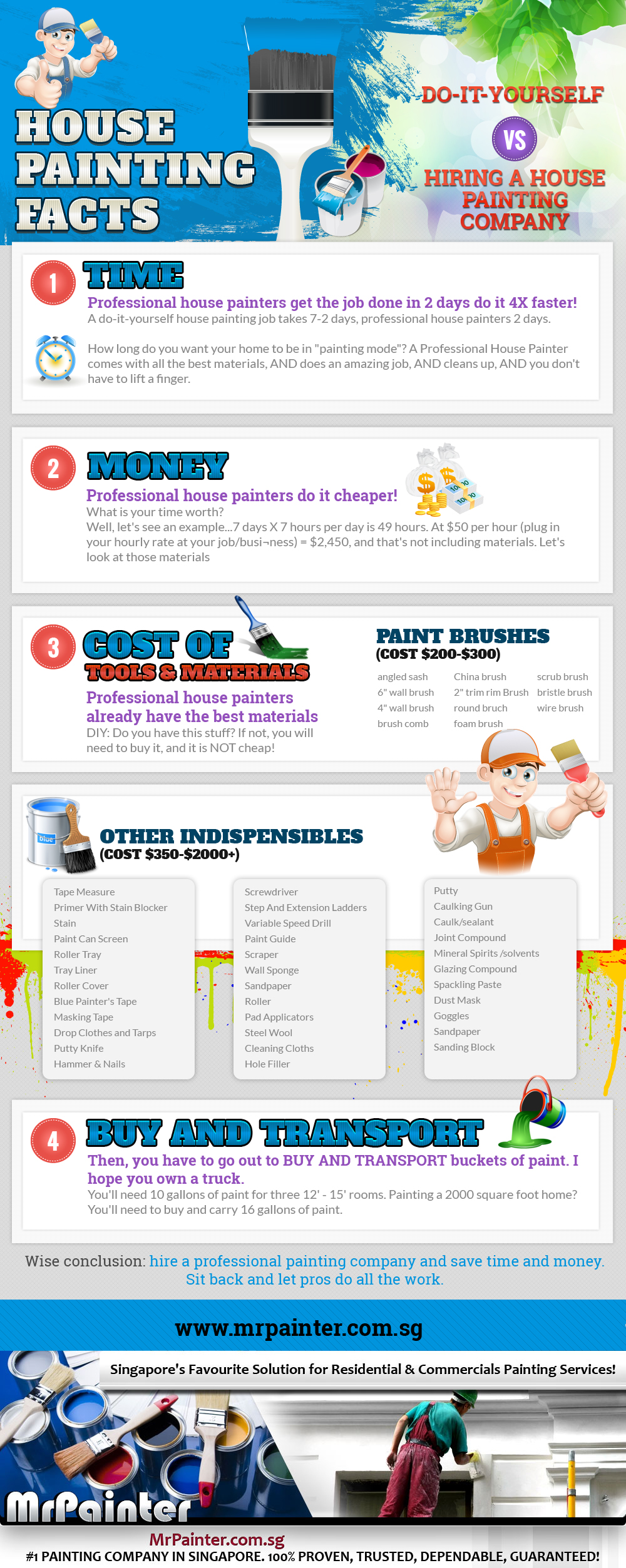Understand Just How Seasonal Conditions Impact The Success Of Industrial Outside Paint And Find Out The Suitable Periods To Assure Lasting Results For Your Task
Understand Just How Seasonal Conditions Impact The Success Of Industrial Outside Paint And Find Out The Suitable Periods To Assure Lasting Results For Your Task
Blog Article
Author-Carlson Chaney
When you're preparing a commercial exterior painting job, seasonal variables can make or damage your outcomes. You'll want to consider how temperature level and humidity effect paint application and drying times. Picking the best period can guarantee your paint adheres appropriately and lasts longer. However which periods are truly the most effective for this type of work? Allow's explore the key elements that can influence your project's success.
The Influence of Temperature on Paint Application
When you're planning an industrial external paint task, the temperature can substantially affect how well the paint adheres and dries.
Preferably, you want to repaint when temperatures range between 50 ° F and 85 ° F. If it's as well chilly, the paint may not cure correctly, causing concerns like peeling off or fracturing.
On the other hand, if it's too hot, the paint can dry out too swiftly, stopping proper adhesion and causing an unequal surface.
You ought to also take into consideration the time of day; morning or late afternoon offers cooler temperature levels, which can be extra desirable.
Always check the maker's recommendations for the specific paint you're using, as they typically provide support on the excellent temperature variety for optimal results.
Moisture and Its Result on Drying Times
Temperature level isn't the only ecological element that affects your business exterior painting job; humidity plays a substantial function as well. High humidity levels can reduce drying out times considerably, influencing the total quality of your paint task.
When the air is filled with dampness, the paint takes longer to treat, which can result in concerns like bad adhesion and a higher risk of mildew growth. If you're painting on an especially moist day, be gotten ready for prolonged delay times between layers.
https://www.domain.com.au/living/seven-things-consider-painting-homes-exterior-770532/ to check local weather and strategy appropriately. Preferably, aim for moisture degrees in between 40% and 70% for optimum drying out.
Maintaining these factors in mind guarantees your job stays on track and supplies a long-term finish.
Best Seasons for Commercial Exterior Painting Projects
What's the best season for your commercial outside painting jobs?
Springtime and early loss are generally your best options. During these seasons, temperatures are moderate, and moisture levels are usually reduced, creating suitable problems for paint application and drying.
Prevent summer's intense heat, which can trigger paint to dry too promptly, resulting in inadequate adhesion and finish. Likewise, exterior house painters tulsa can prevent appropriate drying and curing, risking the long life of your paint job.
Aim for days with temperature levels between 50 ° F and 85 ° F for optimum outcomes. Bear in mind to check the local weather prediction for rainfall, as damp conditions can destroy your job.
Planning around these elements guarantees your painting project runs smoothly and lasts much longer.
Verdict
In conclusion, planning your industrial external painting tasks around seasonal factors to consider can make a substantial distinction in the end result. By organizing job during the suitable temperatures and humidity degrees, you'll make sure far better attachment and drying out times. Bear in mind to watch on local weather forecasts and pick the right time of year-- spring and early loss are your best options. Taking these actions will aid you accomplish a resilient and professional coating that lasts.
